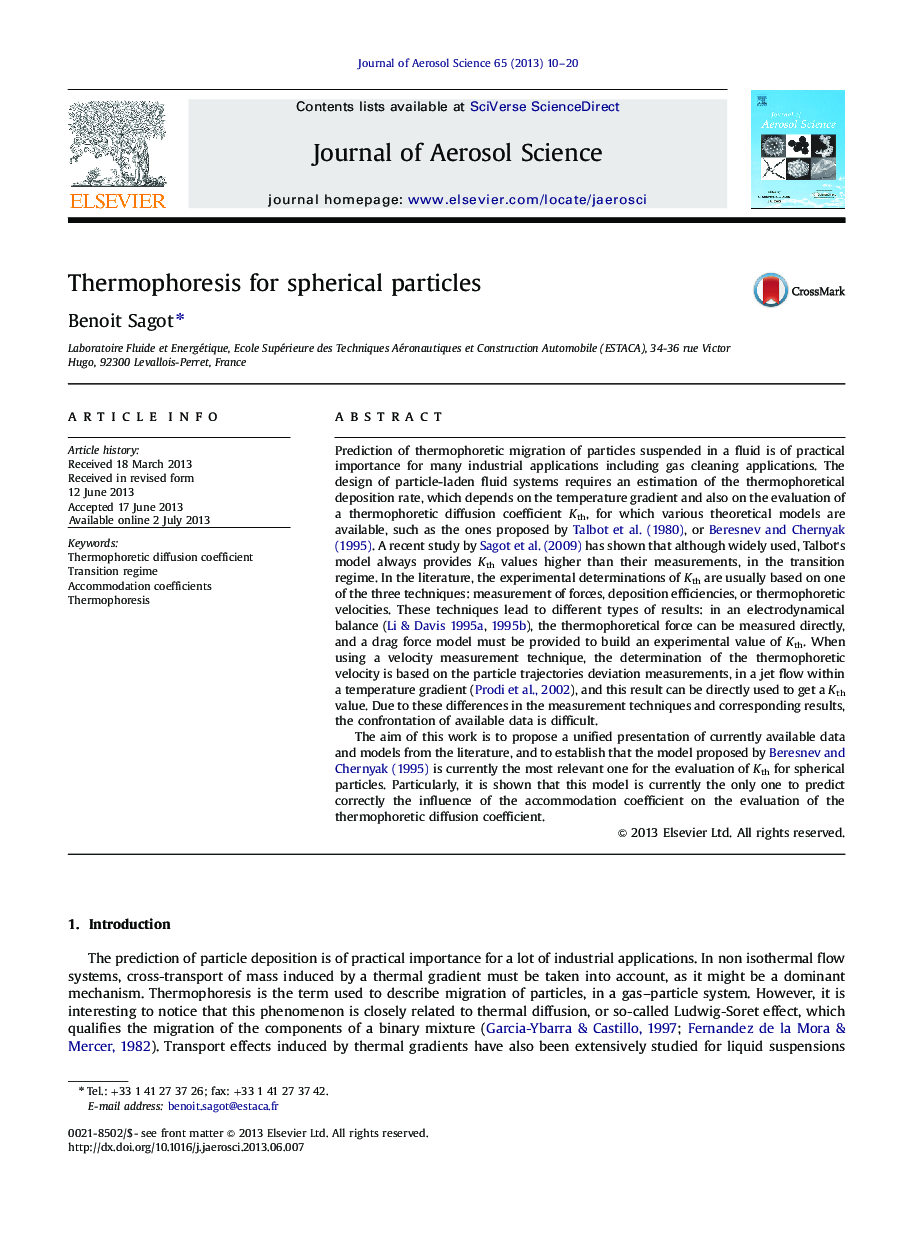| کد مقاله | کد نشریه | سال انتشار | مقاله انگلیسی | نسخه تمام متن |
|---|---|---|---|---|
| 6344527 | 1620758 | 2013 | 11 صفحه PDF | دانلود رایگان |
- We gathered most of the currently available data concerning thermophoresis of spherical particles.
- These data were compared to Talbot and Beresnev's models.
- The model proposed by Beresnev and Chernyak appears to be the most relevant.
- Accommodation factors must be taken into account by models.
Prediction of thermophoretic migration of particles suspended in a fluid is of practical importance for many industrial applications including gas cleaning applications. The design of particle-laden fluid systems requires an estimation of the thermophoretical deposition rate, which depends on the temperature gradient and also on the evaluation of a thermophoretic diffusion coefficient Kth, for which various theoretical models are available, such as the ones proposed by Talbot et al. (1980), or Beresnev and Chernyak (1995). A recent study by Sagot et al. (2009) has shown that although widely used, Talbot's model always provides Kth values higher than their measurements, in the transition regime. In the literature, the experimental determinations of Kth are usually based on one of the three techniques: measurement of forces, deposition efficiencies, or thermophoretic velocities. These techniques lead to different types of results: in an electrodynamical balance (Li & Davis 1995a, 1995b), the thermophoretical force can be measured directly, and a drag force model must be provided to build an experimental value of Kth. When using a velocity measurement technique, the determination of the thermophoretic velocity is based on the particle trajectories deviation measurements, in a jet flow within a temperature gradient (Prodi et al., 2002), and this result can be directly used to get a Kth value. Due to these differences in the measurement techniques and corresponding results, the confrontation of available data is difficult.The aim of this work is to propose a unified presentation of currently available data and models from the literature, and to establish that the model proposed by Beresnev and Chernyak (1995) is currently the most relevant one for the evaluation of Kth for spherical particles. Particularly, it is shown that this model is currently the only one to predict correctly the influence of the accommodation coefficient on the evaluation of the thermophoretic diffusion coefficient.
Journal: Journal of Aerosol Science - Volume 65, November 2013, Pages 10-20
